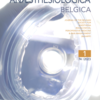Standardized training in perioperative Point-of-Care Ultrasound (PoCUS): what are we waiting for?
Published online: May 08 2023
Ultrasonography (US) has long been confined to the domains of radiology and cardiology, where the use of this non-invasive diagnostic imaging technique is considered an essential part of clinical practice and where US-training is embedded in the core curriculum.
Anesthesiologists started to explore the value of US over 30 years ago, coincident with the development of transesophageal probes for cardiac imaging, with Cahalan et al. demonstrating the incremental value of intraoperative echocardiography in the differential diagnosis of cardiovascular collapse1. Nowadays the use of transesophageal echocardiography (TEE) has become an integral part of the management of cardiac surgery patients, and is performed worldwide by trained cardiac anesthesiologists in most cases. The levels of proficiency required to perform advanced TEE are well defined and have been incorporated in an official training- and certification program, established through close collaboration between anesthesiologists (European Association of CardioThoracic Anaesthesiology and Intensive Care, EACTAIC) and cardiologists (European Association of CardioVascular Imaging, EACVI) in Europe. Beyond the cardiac operating theatre, however, the use of perioperative echocardiography remains disappointingly low. This may change with the more recent development of a framework for basic-level TEE applications2, but an authorized training program for quality assurance by means of certification in basic perioperative echocardiography is still lacking in Europe.
Interestingly, clinical applications of US-based imaging in anesthesia and perioperative medicine have expanded meanwhile, far beyond the field of echocardiography. Technological advancements have led to superior image resolution and miniaturization of US equipment. This has boosted the use of US imaging to guide complex technical procedures for difficult intravascular access, and for safer and more accurate delivery of local anesthetics in peripheral and neuraxial nerve blocks. US imaging is also recommended to scan the abdominal cavity in major trauma, to quantify gastric content prior to induction of anesthesia, as well as bladder content after surgery. Somewhat surprisingly, US- based techniques are also advocated to evaluate regions previously considered echo-hostile, mainly because of air artefacts. Indeed, lung US scanning has been shown to assist in the diagnosis of pleural effusions, pneumothorax, and lung consolidation, while airway US can serve to guide tracheal access3. The complete portfolio of applications is covered by the acronym PoCUS (point of care US), and each one of these requires specific knowledge and skills which somehow must be trained and supervised by experts in the domain.
In this issue of the Acta Anaesthesiologica Belgica, Van de Putte et al. come up with suggestions for a national standard towards official certification in perioperative PoCUS4. They present a structured pathway for implementing PoCUS training and education in the core curriculum of Belgian anaesthesia trainees and advise Belgian anaesthesia consultants to also aim for certification. They further suggest that recertification should be considered as an (obligatory?) element of a continuing education program. These experts’ suggestions are echoing a number of international position papers addressing the need for training in perioperative PoCUS5.
The authors are to be commended on their efforts in developing a structured curriculum that is largely in line with earlier advises from international experts in the field. As they aim their work to become a national standard, it is important to acknowledge that a number of details included in the proposal (e.g. minimum number of cases required, definition of ‘accredited facilities’, ‘certified experts’ and ‘scope of PoCUS’) remain vague and lack a solid scientific base. In general, scientific evidence for the clinical benefit of PoCUS in the perioperative setting, at this time, is still fragmented. While this should not be used as an excuse to neglect the important call for standardized PoCUS training, it serves to put the subject of certification in a correct medicolegal and educational perspective: could absence of certification or failure to support PoCUS certification be considered causal to substandard practice in anesthesia and perioperative medicine?
The authors rightfully state that the call for PoCUS training amongst anesthesia trainees is high. No doubt that this need should be addressed, but several challenges are to be faced before implementation of such an ambitious new training program can be initiated, on top of an already loaded curriculum of Belgian anesthesia residents, with success. These challenges include, but are not limited to, the allocation of human and non-human resources, while facing growing clinical programs within the restrictions of a working time directive, the constitution of a sufficiently large pool of trained PoCUS experts, and the official ownership and coordination of a new educational program within the complex organizational landscape of medical specialty training and accreditation.
The Belgian Society of Anesthesiology, Resuscitation, Perioperative medicine and Pain Management (BeSARPP) is ready to assume its responsibility in this project, in line with its mission to promote and improve education in perioperative medicine. The proposal of Van de Putte et al. can serve as an excellent basis for the development of such a National training program, provided that all academic departments of anesthesia and the respective official authorities in Belgium are willing to subscribe.
Acknowledgements and potential conflicts of interest: The authors received no funding and declared no potential conflicts of interest related to the content of this editorial.
References
- Cahalan MK, Litt L, Botvinick EH, Schiller NB. Advances in noninvasive cardiovascular imaging: implications for the anesthesiologist. Anesthesiology 1987;66(3):356-372.
- Reeves ST, Finley AC, Skubas NJ, et al. Special article: basic perioperative transesophageal echocardiography examination: a consensus statement of the American Society of Echocardiography and the Society of Cardiovascular Anesthesiologists. Anesth Analg 2013;117(3):543-558.
- You-Ten KE, Siddiqui N, Teoh WH, Kristensen MS. Point-of-care ultrasound (POCUS) of the upper airway. Can J Anaesth 2018;65(4):473-484.
- Van de Putte P, Vernieuwe L, Bouchez S, et al. Expert recommendations on education, training and certification in perioperative Point-of- Care Ultrasound in Belgium (BePOCUS). Acta Anaesthesiol Belg. 2023;In press.
- Mahmood F, Matyal R, Skubas N, et al. Perioperative Ultrasound Training in Anesthesiology: A Call to Action. Anesth Analg 2016;122(6):1794-1804.
